A tasty combination of two classic dishes, spicy cumin lamb noodles are bursting with great flavours. This hand-torn version is easy & fail-proof. A tutorial video is included.
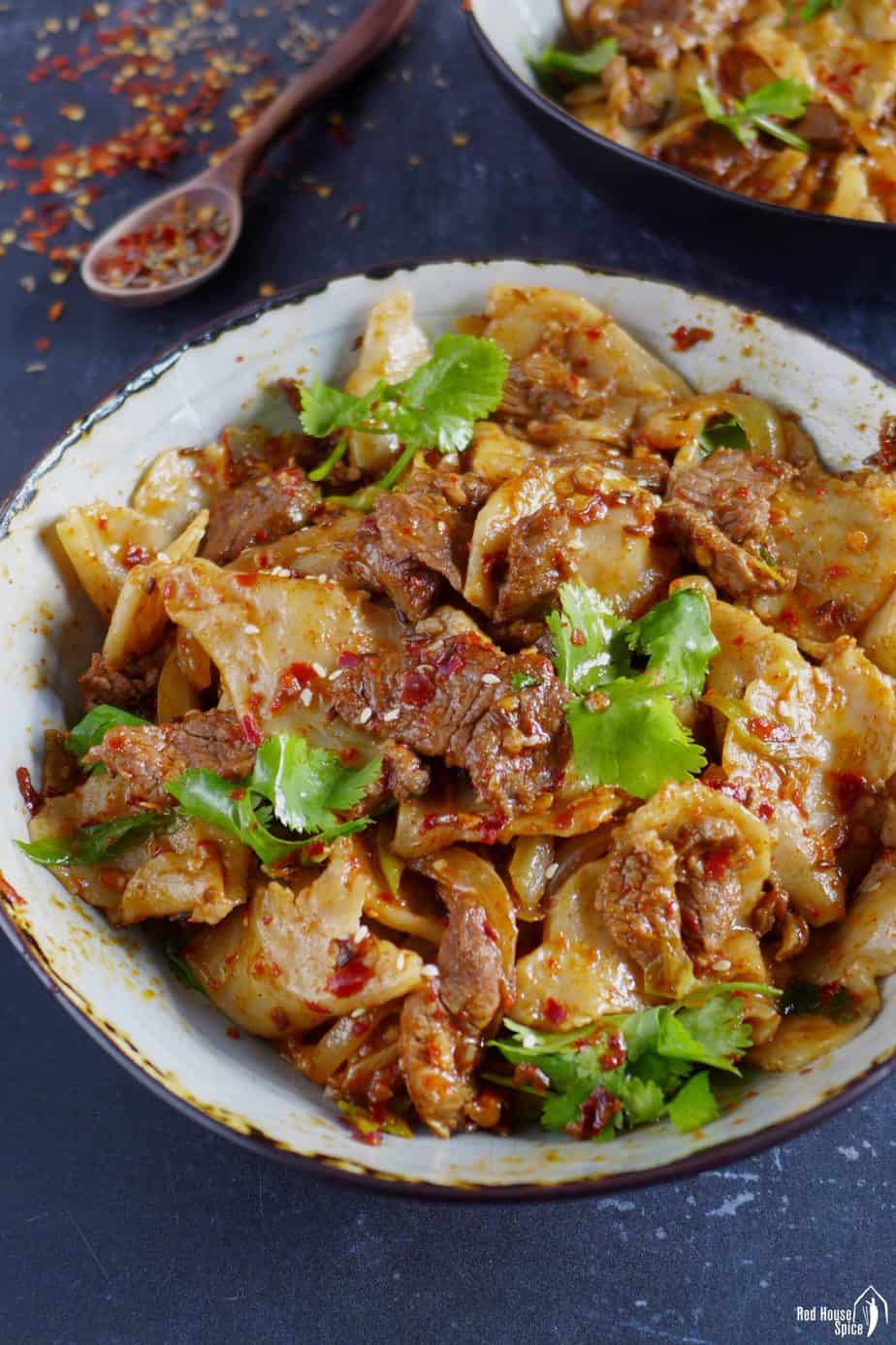
A combination of two classic dishes
Some of my readers have asked me to create a recipe inspired by spicy cumin lamb noodles, a dish served at Xi’an Famous Food (a popular Chinese restaurant chain in New York City). It’s a combination of Spicy Cumin Lamb Stir-fry (孜然羊肉) and Biang Biang Noodles.
Having already published recipes on my blog for both of these two classic Chinese dishes, I’m excited to share my own version. Instead of hand-pulled noodles, I’d like to combine the lamb with another type of Chinese noodles, hand-torn noodles which I regularly cook in our Red House.
Three simple steps to cook the dish
Before I explain in detail all the tips and tricks, here is a summary of three simple steps for making spicy cumin lamb noodles.
- Prepare the noodle dough and leave to rest. Then marinate the lamb.
- Tear the dough into small pieces and cook them in boiling water.
- Stir fry the lamb with aromatics and spices. Mix in the noodles then serve.
What are hand-torn noodles
Known as Mian Pian (面片) in Chinese, hand-torn noodles are very popular in northwestern regions of China where I was born and raised. Essentially, they’re made of simple flour-water dough and torn by hands into irregular-shaped, chewy pieces.
Served either in a broth/soup (面片汤) or with a quick stir-fry (炒面片), hand-torn noodles make a hearty, tasty and comforting all-in-one meal. They may not look as attractive as hand-pulled noodles, but they taste just as good. Another important point is that you can hardly fail to make it!
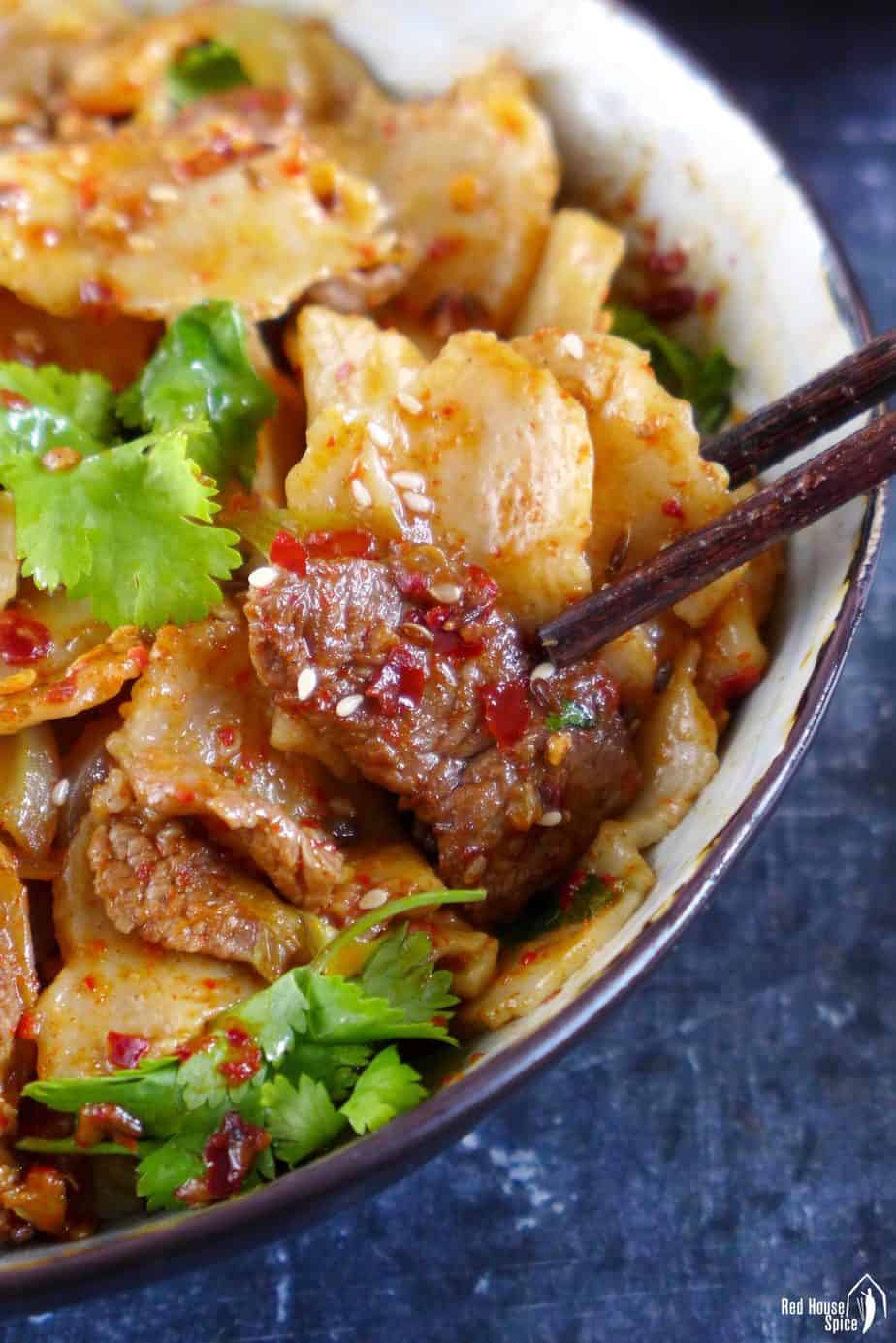
How to prepare the dough
Making the dough for hand-torn noodles is extremely easy. Flour, water and a pinch of salt are all that you need. You can knead the dough either by hand or with a stand-mixer (with a dough hook attachment).
What kind of flour to use
All-purpose flour (plain flour) works perfectly for this recipe. That said, please feel free to use other types of flour if it’s more convenient for you. Compare to hand-pulled noodles, the flour type matters less for this recipe.
The ideal flour-water ratio is 2:1 by WEIGHT. Since the water absorption capacity may vary depending on the brand of your flour, slight adjustments are sometimes necessary. The dough should feel medium firm once formed. After 60 min rest, it will become much softer.
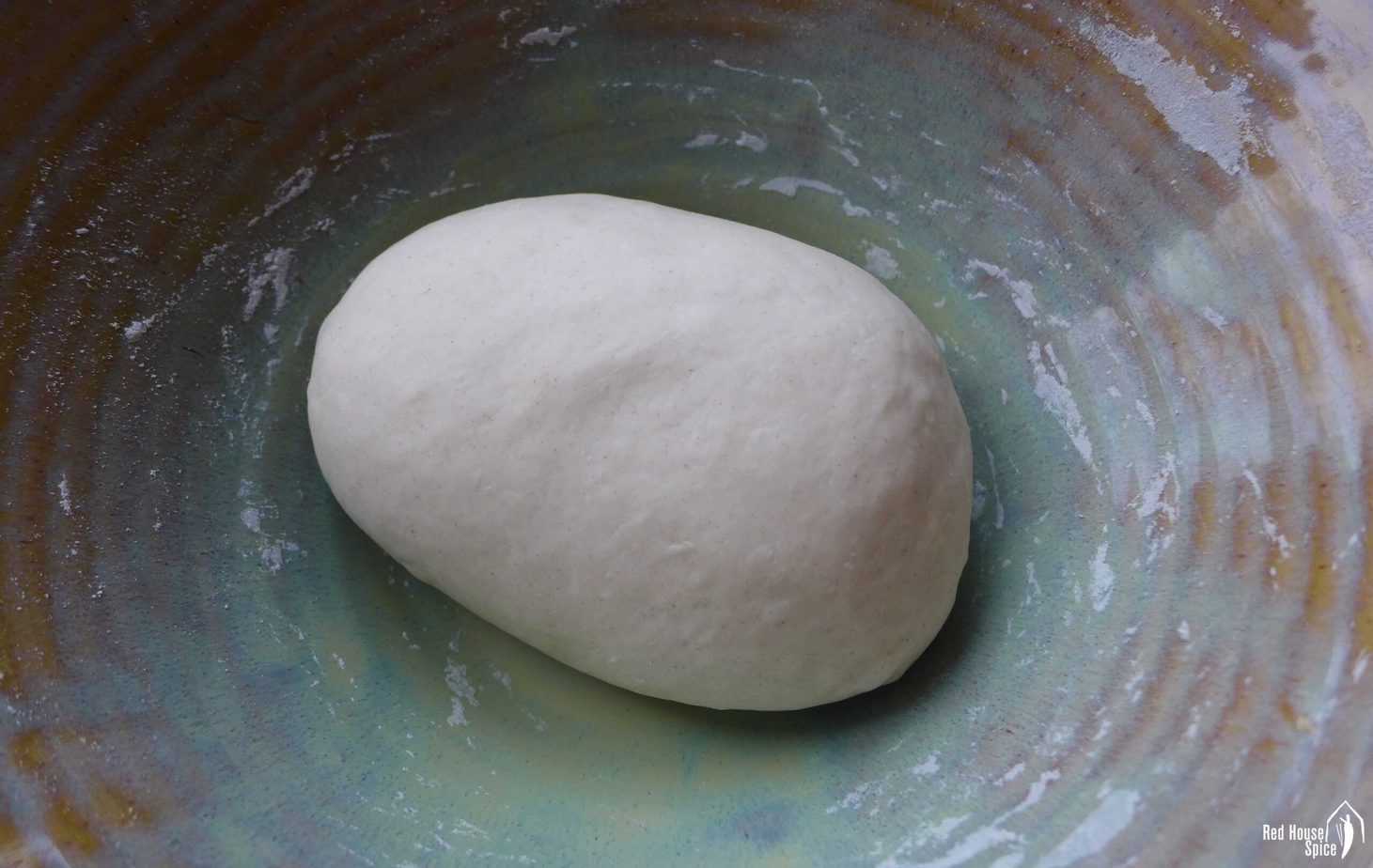
How to knead the dough efficiently
If using hands, here is my trick to make kneading easier: Combine flour, water and salt to form a rough-looking dough. Instead of kneading it all the way to the desired texture, you may leave it to rest for 10 minutes or so, then knead for 1-2 mins until it becomes very smooth.
If using a stand mixer with a dough hook, it takes about 8 minutes on low speed to knead the dough.
Rest the dough for 1 hour
Leave the dough in the mixing bowl and cover with a lid, cling film or a wet towel. Allow it to rest for at least 60 minutes. During this process, the dough will soften and the gluten proteins in the flour will create strong bonds thus making the dough elastic and stretchable.
How to shape and cook the noodles
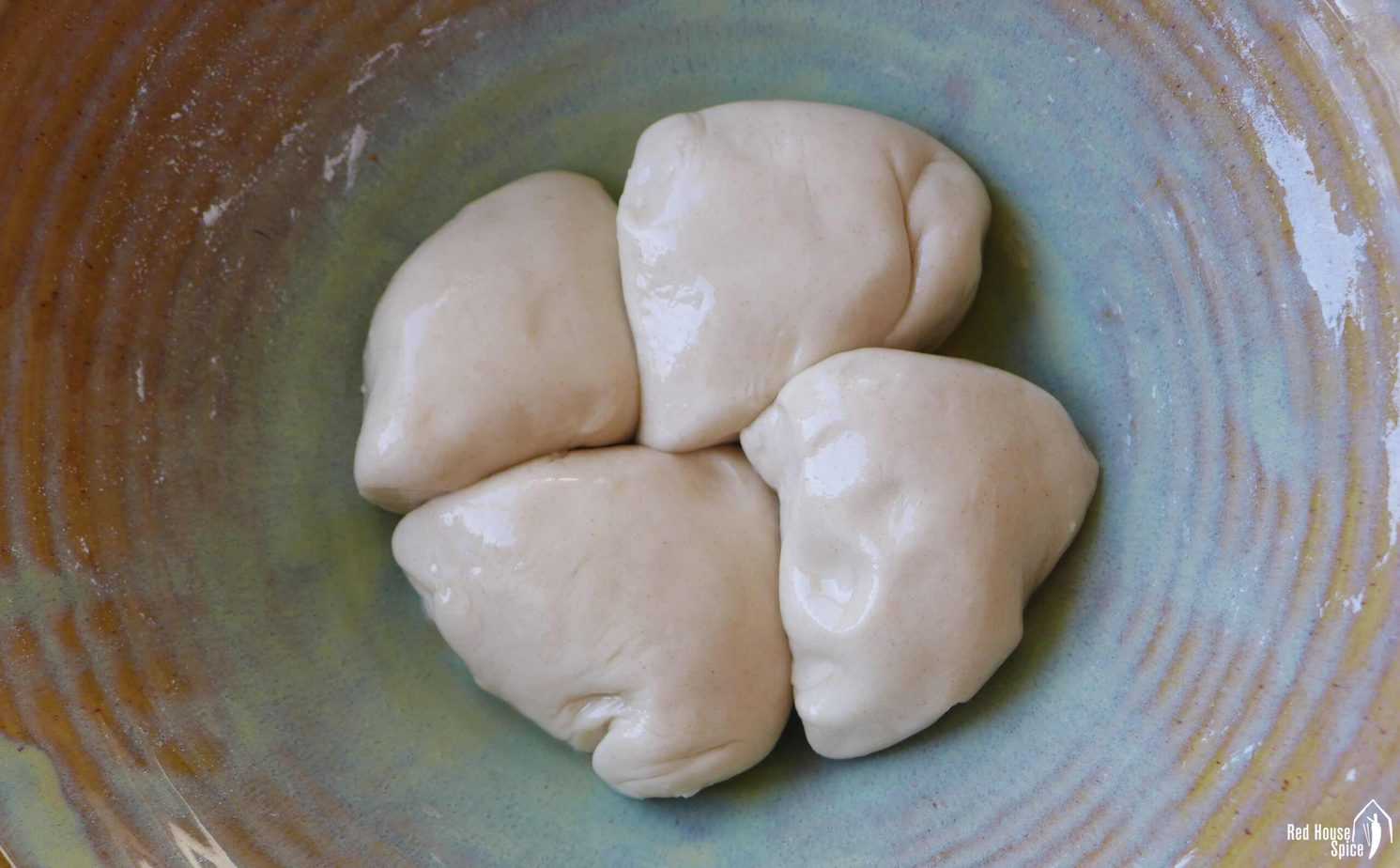
Once the resting period ends, divide the dough into small portions. Then coat them thoroughly with a little oil. This serves two purposes: it prevents the dough from drying out and also prevents it from sticking to your hands.
Now let’s move on to the fun part of this recipe. Exactly like how you make hand-pulled noodles, the shaping and cooking of hand-torn noodles takes place simultaneously. Here is the procedure (I highly recommend you also check out the tutorial video in the recipe card below):
- Bring a large pot of water to a full boil.
- Take a piece of dough and flatten it a little in your hands. Pinch on the edge with your fingers. Pull it outwards until it breaks.
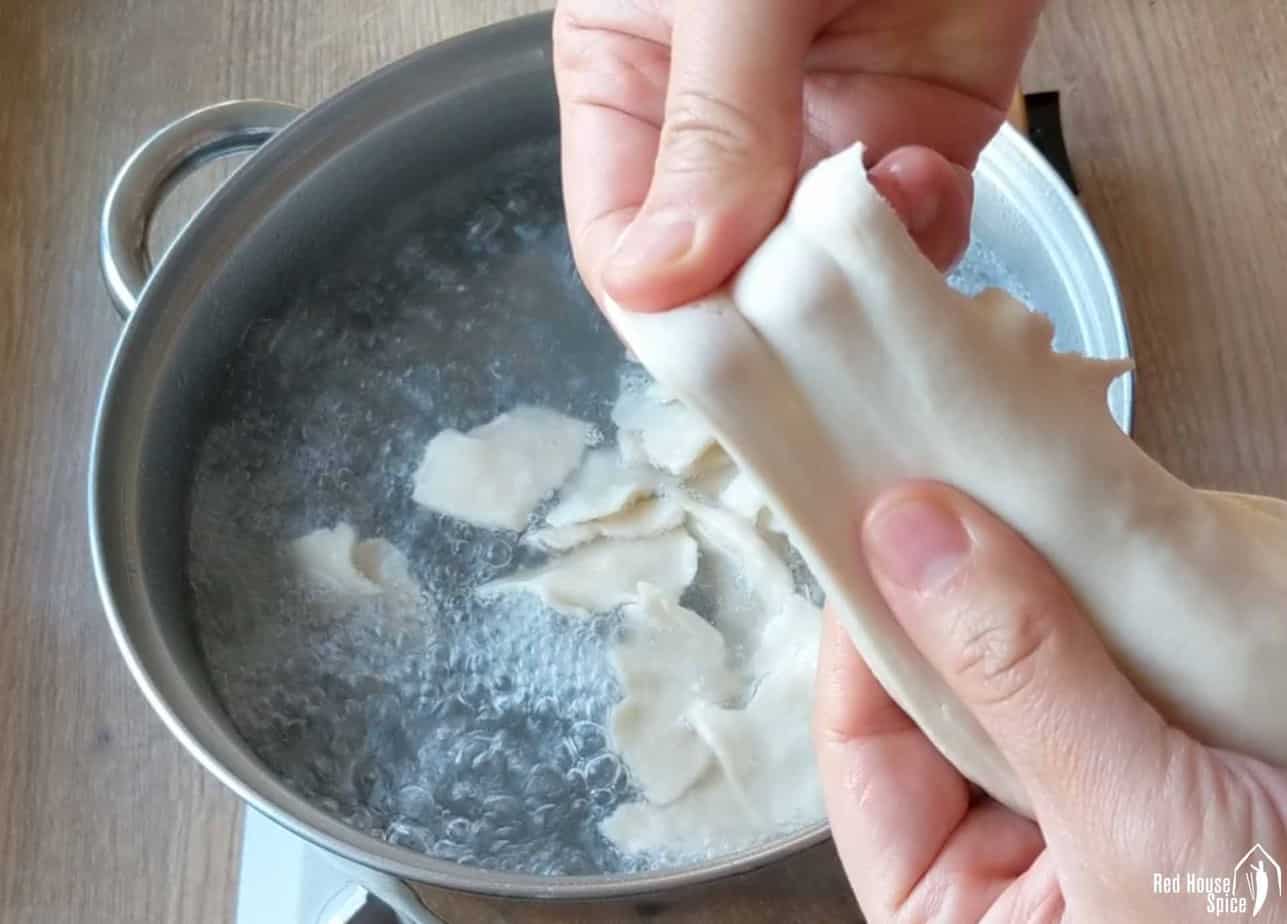
- Drop the torn piece into the boiling water and repeat the process to tear more.
- Once you finish all the dough, leave the noodles to cook for a further minute.
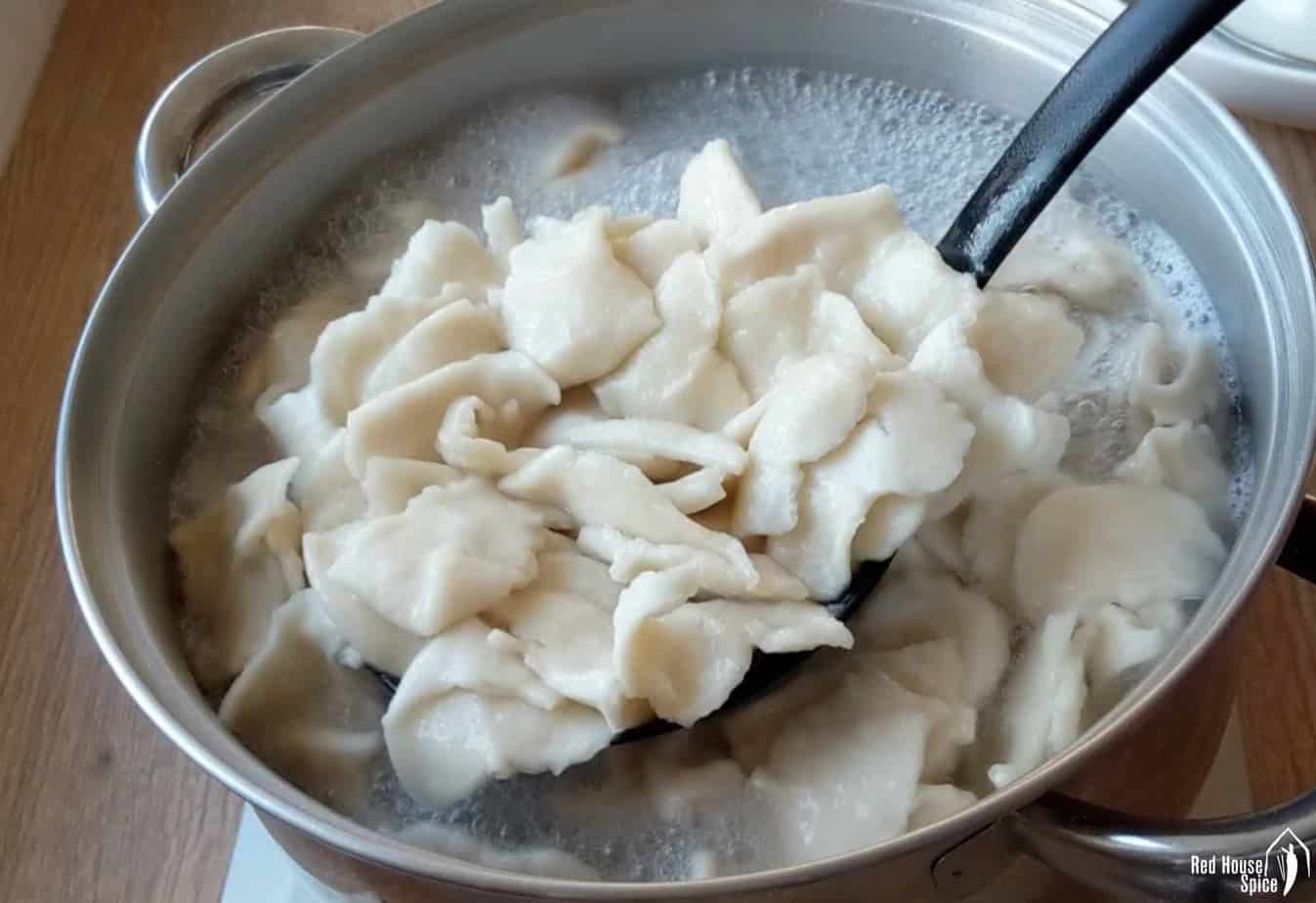
- Transfer the noodles to a colander. Rinse for a few seconds under running water then set aside. This is to prevent them from sticking together. But try not to over rinse. A little stickiness will help to absorb the sauce later on.
I guess you might be wondering if the noodles dropped in the water in the early stage will be overcooked by the time the later pieces go in. Trust me (who has been cooking this dish for years), they won’t be overcooked and you wouldn’t notice the difference as long as you follow these two tips:
- Tear the dough into noodles with similar thickness.
- Move fast when tearing. It also helps to have another pair of hands working with you.
How to make lamb tasty and juicy
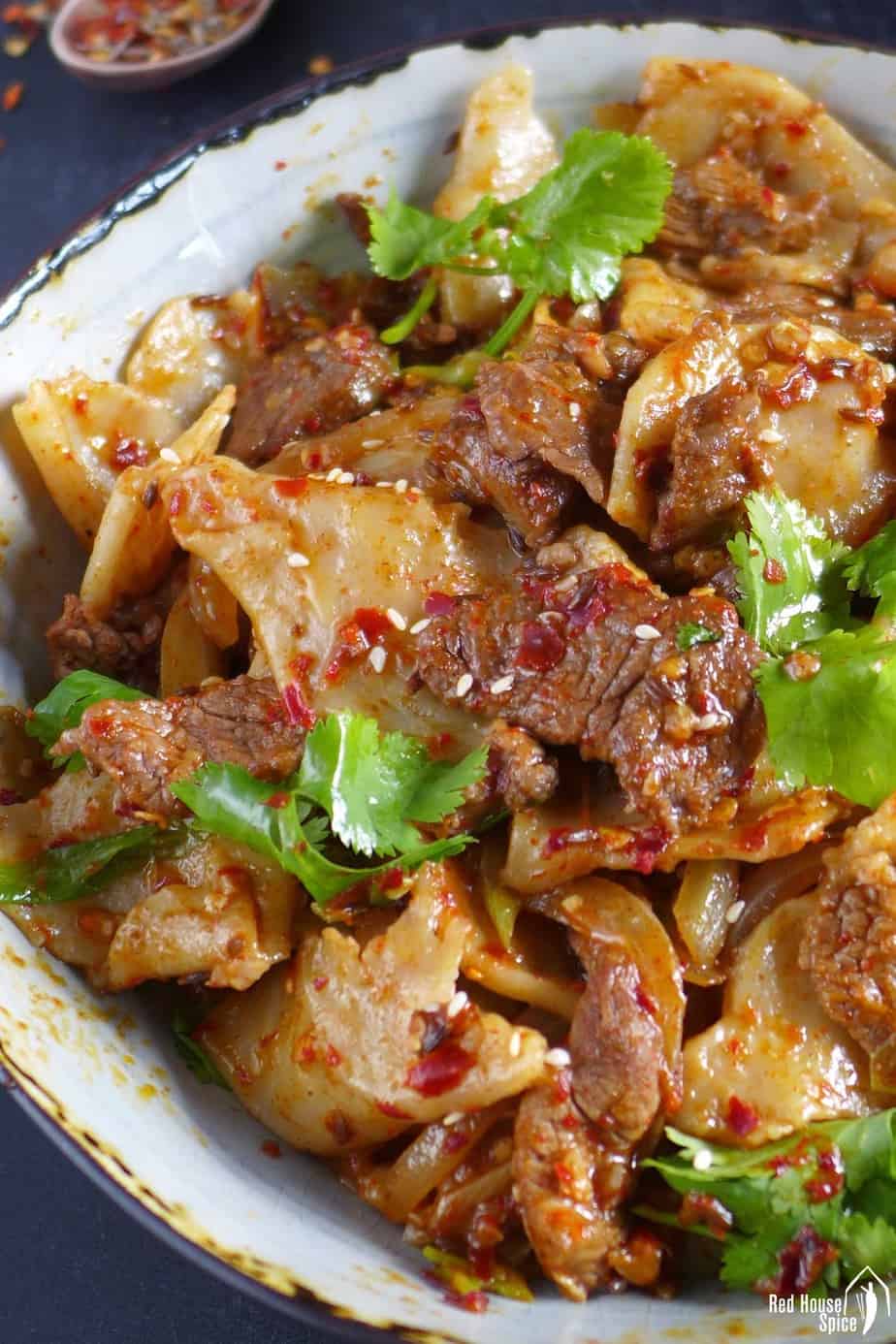
The second component of today’s dish is the scrumptious spicy cumin lamb for which I’ve already shared a recipe on the blog. I made some adjustment based on the previous version to provide a more pungent and saucy taste that pairs well with hand-torn noodles.
Marinate the lamb for tenderness
While waiting for the noodle dough to rest, you can start to marinate the lamb, the star ingredient of the dish.
- The best cut for this dish is lamb leg steak as it’s tender enough for a quick stir-fry.
- Cut the lamb against the grain into thin slices. Semi-frozen meat is much easier to slice so you may put the lamb in the freezer for an hour or two.
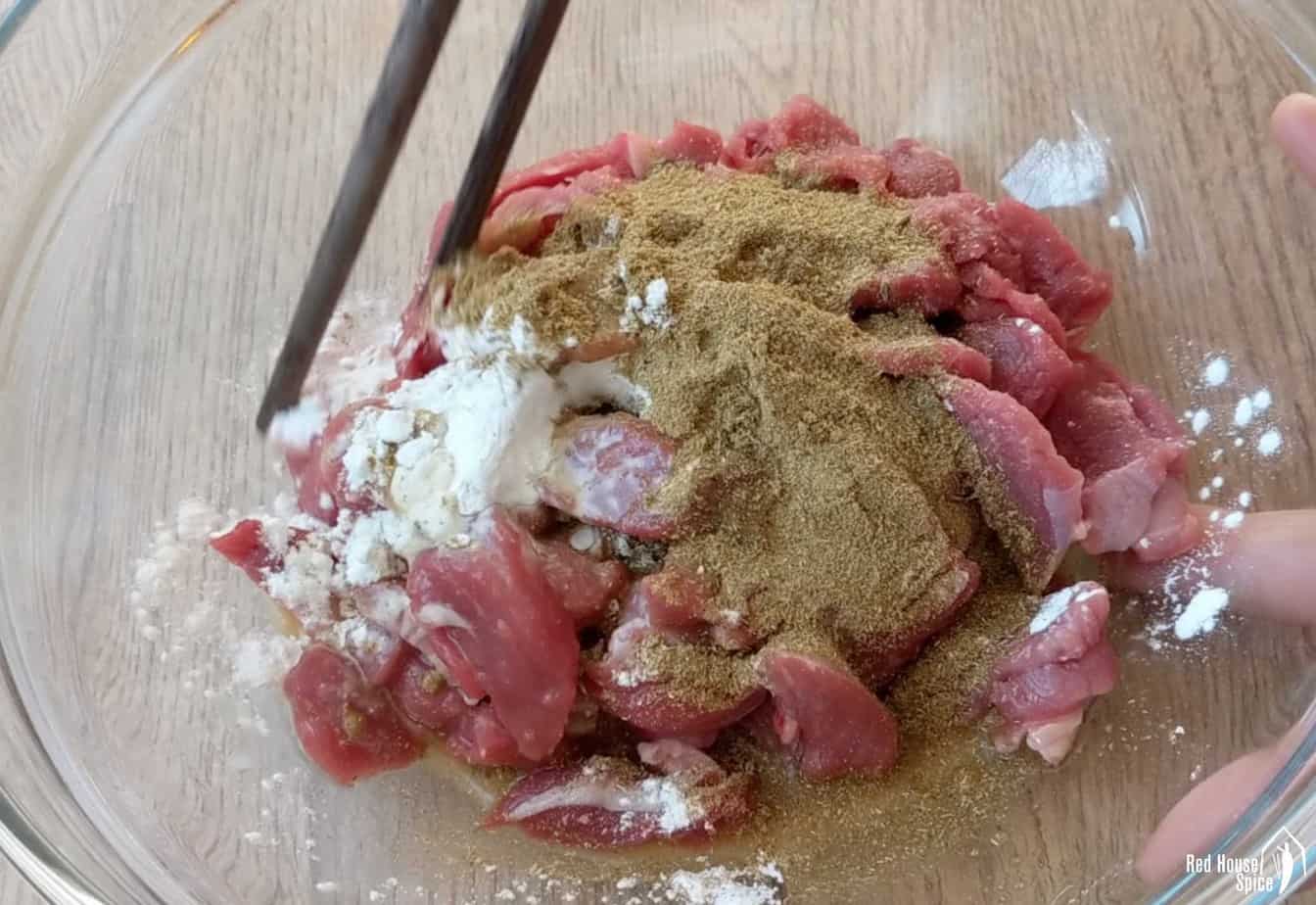
- In a mixing bowl, mix the lamb with tapioca starch (or corn starch), cumin powder and Shaoxing rice wine. Stir in a little oil at the end.
Spices are the soul of the dish
Hot chili and cumin make up the flavour profile of this dish which is a much-loved spice combination for lamb in northwestern Chinese cuisine (Xi Bei Cai, 西北菜). Many classic dishes, such as Lamb Skewers and Baked Lamb Bao Buns, are seasoned with this spice formula.

I use both chili flakes and ground chili for an enhanced flavour and vibrant colour. There is no specific type of chili that I’d recommend. Choose the one that suits your own tolerance to spiciness. If you cannot find ready-use chili flakes, make your own with dried chilies using a food processor or spice grinder.
For ground chili, you may use either chili power or paprika. The former sometimes contains other spices apart from dried chili. The latter is purely made of dried chili and provides a nice red colour. It’s ideal to use a mild version for an appetising look without making the dish overly spicy.
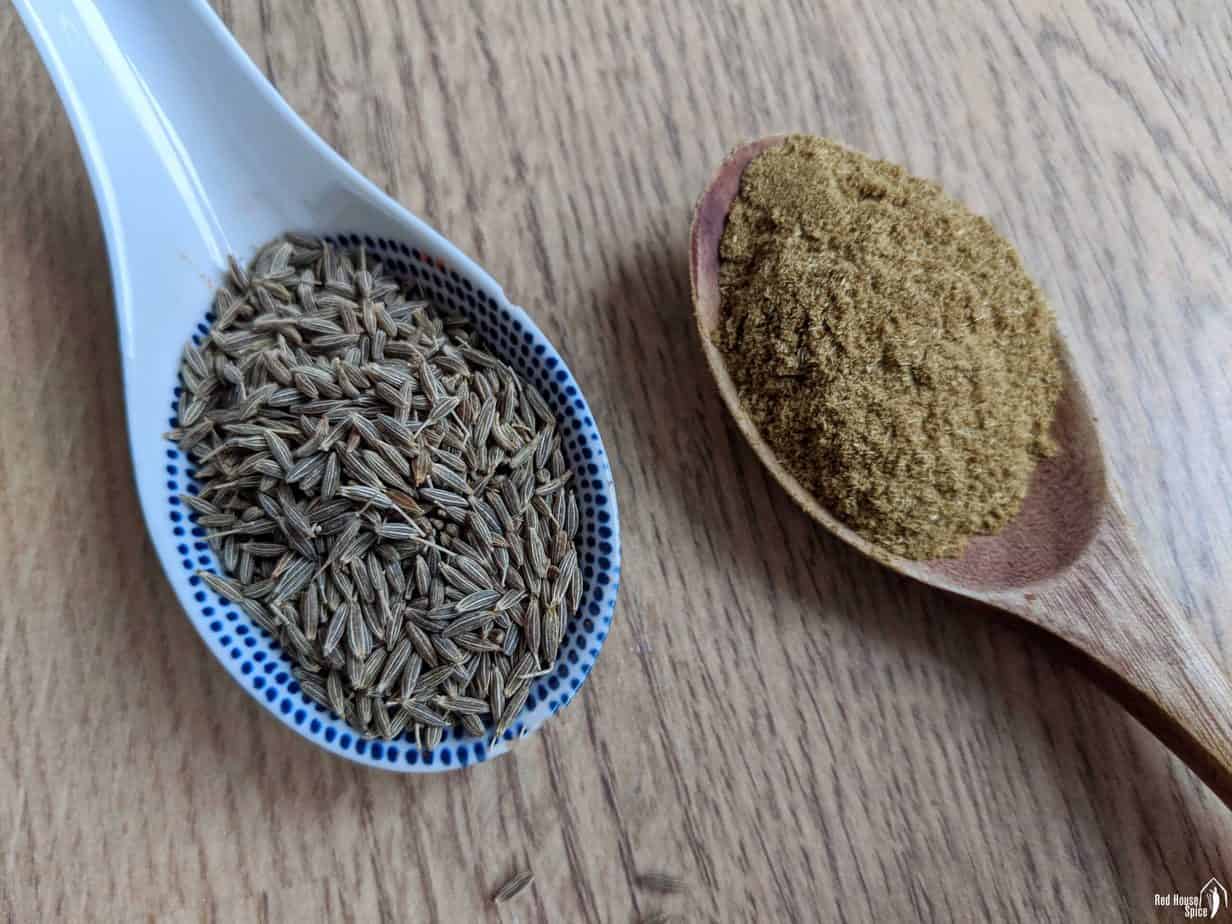
I also use cumin in two forms: Cumin powder to marinate the lamb so that the flavour can be absorbed effectively; Cumin seeds added during the stir-fry process to provide an extra kick.
I like how blogger Neha from WhiskAffair describes the difference: “Cumin Seeds bursts into flavor when one seed comes in your mouth while the ground cumin mingles well with the base of the dish and becomes a part of the overall taste profile.”
Stir-fry and combine the dish
Stir-frying is quick and straightforward. Here are the steps:
- Heat up a wok until it smokes. Pour in oil. Stir in the marinated lamb. Then add garlic, scallions and onion. Fry until the lamb loses its pinkness.
- Add chili flakes, chili powder, cumin seeds, soy sauce, salt and sesame seeds. Fry for a further 30 seconds or so.
- Put in the cooked noodles. Stir well to evenly coat the noodles with the sauce.
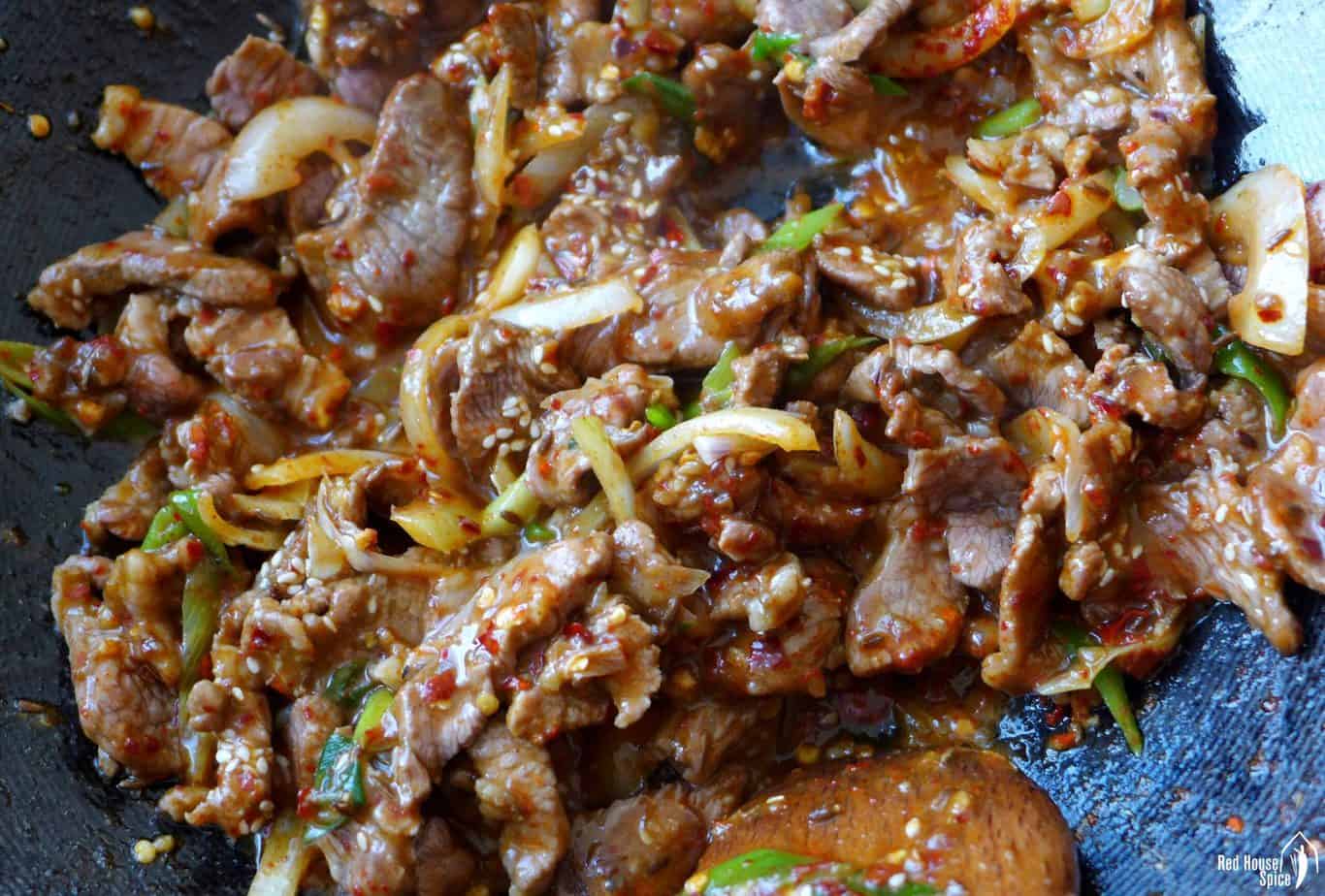
To ensure a juicy texture of the lamb, follow these two tips:
- Keep the heat high throughout the process. A traditional carbon steel wok over a powerful gas burner produces the best result.
- Move fast and do not overcook so that you don’t lose too much of the moisture inside the lamb. It helps to have all the ingredients at hand before you start.
How to use this recipe creatively
There are many ways to use this recipe. You can separate the two components and match them with other dishes. Here are some of the ideas:
- Mix spicy cumin lamb with Biang Biang Noodles, just like the Xi’an Famous Food version. Or serve the stir-fried lamb with Shou Gan Mian, a type of homemade noodles that are manually rolled and cut.
- Serve spicy cumin lamb with plain rice and vegetarian dishes, such as Smashed Cucumber Salad, Cabbage Stir-fry, etc.
- Serve hand-torn noodles in a tasty soup, such as Winter Melon & Meatball Soup, or in a broth, like the one for Hot & Sour Dumpling Soup.
- Use hand-torn noodles as a substitute for the belt noodles in Big Plate Chicken.
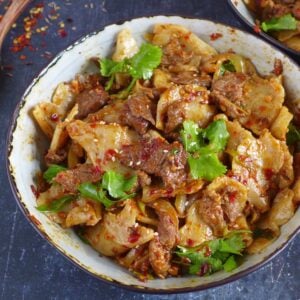
Spicy Cumin Lamb Noodles (Easy Hand-torn Version)
Ingredients
For the noodles
- 200 g all-purpose flour (plain flour)
- 1 pinch salt
- 100 g water - adjust slightly if necessary, see note 2
- Cooking oil - for coating
For the lamb
- 350 g lamb - preferably lamb leg cut
- 2 teaspoon tapioca starch, or corn starch
- 2 teaspoon cumin powder
- 1 tablespoon Shaoxing rice wine
- 1 tablespoon cooking oil
For the stir-fry
- 2 tablespoon cooking oil
- 3 cloves garlic, minced
- 2 stalks scallions, finely chopped
- ½ onion, sliced
- 1 tablespoon chili flakes - see note 2
- 1 teaspoon ground chili - see note 3
- 2 teaspoon cumin seeds
- 1 tablespoon light soy sauce
- ⅓ teaspoon salt
- ½ tablespoon sesame seeds
- Coriander, chopped - optional
Instructions
Prepare the dough
- IF KNEADING BY HAND: Mix flour and salt. Add water gradually. Mix with chopsticks/spatula until no more liquid can be seen. Combine and knead briefly into a dough. Leave to rest (covered) for 10 mins. Knead again for about 2 mins until very smooth. Cover and rest again for at least 60 mins.
- IF KNEADING WITH A STAND MIXER: Add flour, salt and water into the mixing bowl. Knead with a dough hook on low speed until a very smooth dough forms (It takes about 8 mins). Cover and rest for at least 60 mins (see note 4 for tips on make-ahead).
Marinate the lamb
- Cut the lamb against the grain into thin slices then put into a mixing bowl.
- Add starch, cumin powder, Shaoxing rice wine. Mix well.
- Pour in oil. Stir to coat evenly. Set aside.
Cook the noodles
- Once the dough is well rested, divide it into 4 pieces. Use cooking oil to coat each piece.
- Bring a large pot of water to a full boil. Take a piece of dough and flatten it a little in your hands. Pinch on the edge with your fingers. Pull it outwards until it breaks.
- Once you finish all the dough, leave to cook for a further minute.
- Transfer the noodles to a colander. Rinse for a few seconds under running water then set aside.
Stir fry the dish
- Heat up a wok until it smokes (see note 5). Pour in oil. Stir in the marinated lamb. Then add garlic, scallions and onion. Fry until the lamb loses its pinkness.
- Add chili flakes, chili powder, cumin seeds, light soy sauce, salt and sesame seeds. Fry for a further 30 seconds or so.
- Put in the cooked noodles. Stir well to evenly coat the noodles with the sauce.
- Dish out and garnish with coriander if using. Serve immediately.
Video
NOTES
NUTRITION DISCLOSURE: Nutritional information on this website is provided as a courtesy to readers. It should be considered estimates. Please use your own brand nutritional values or your preferred nutrition calculator to double check against our estimates.


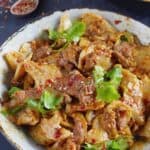
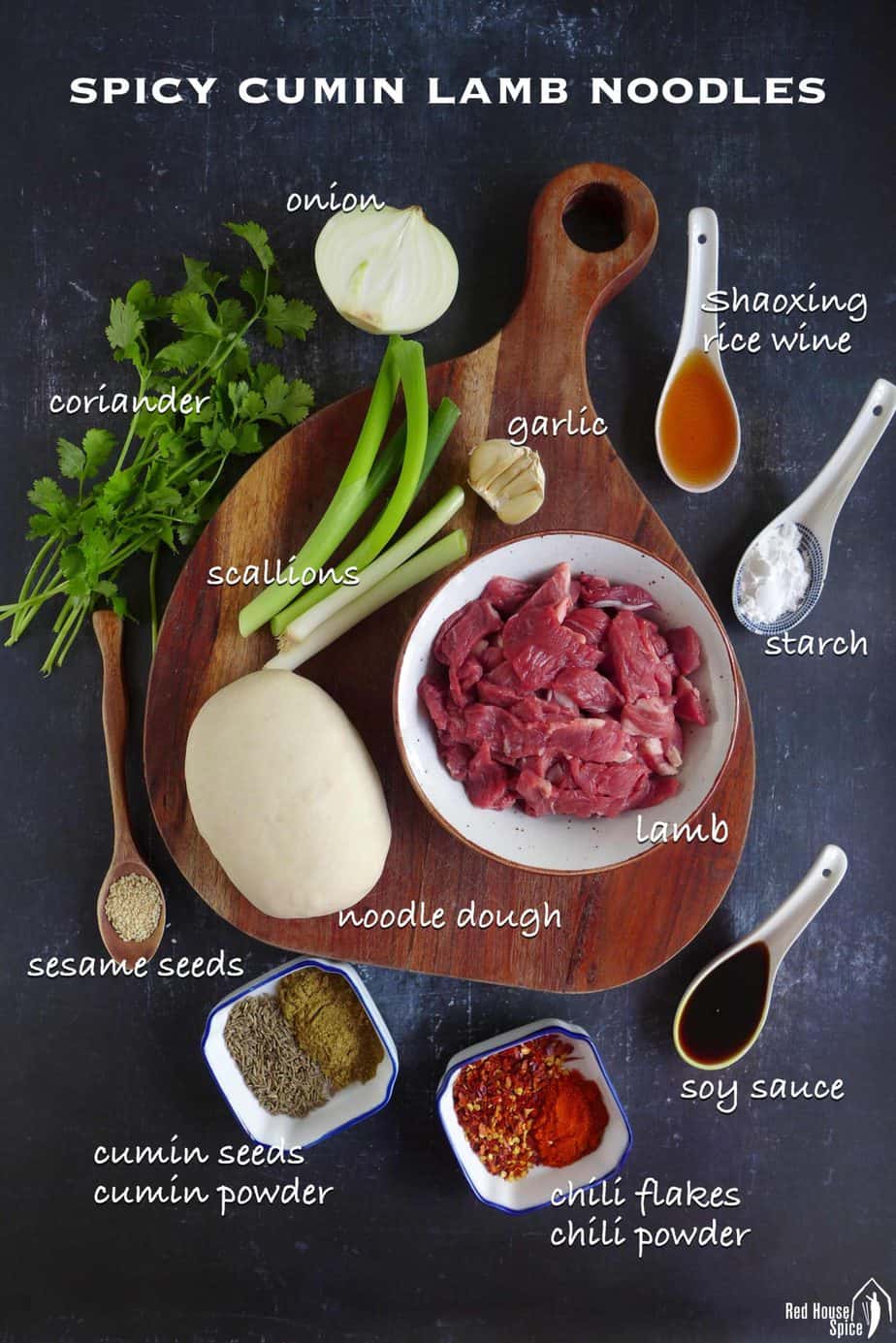
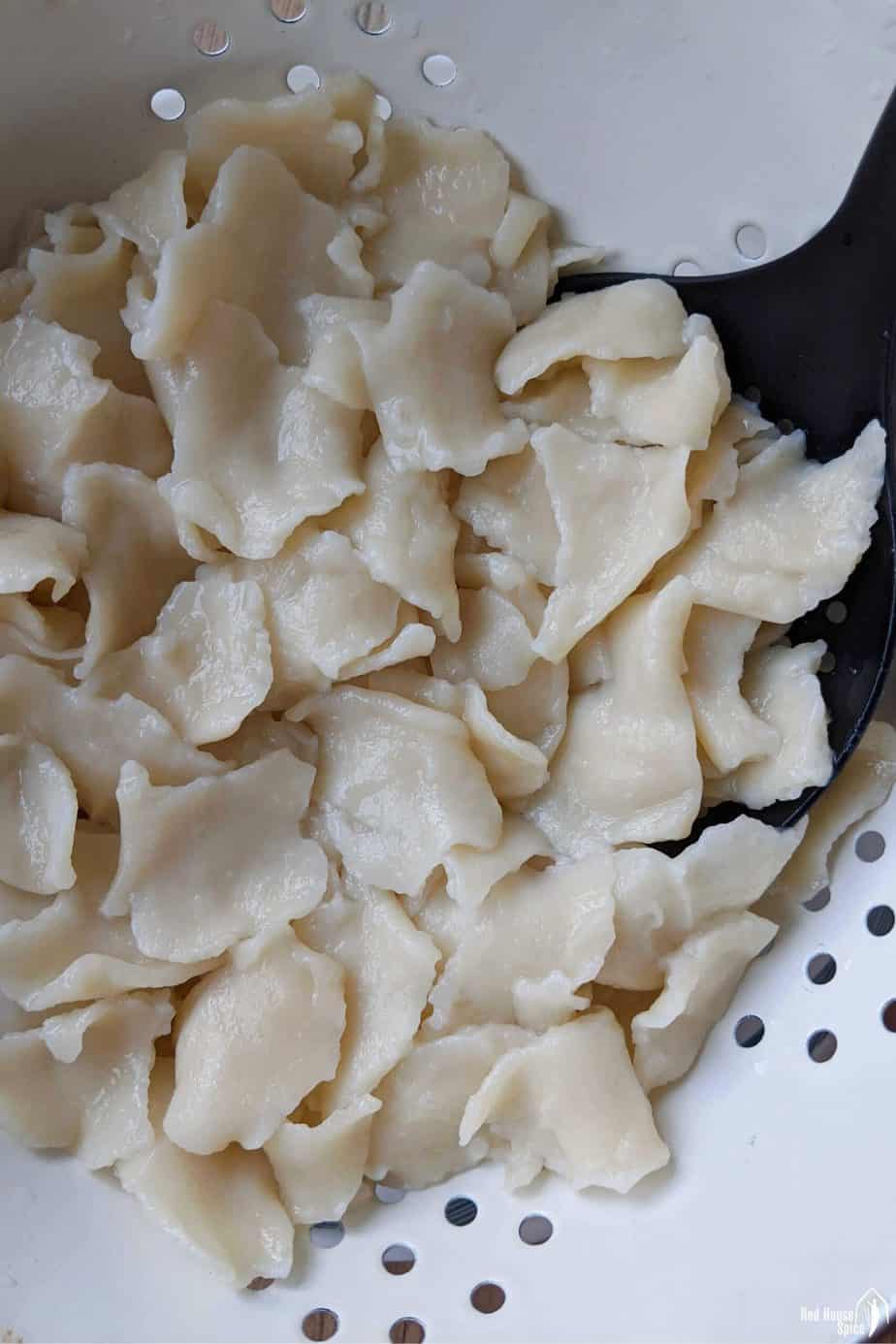
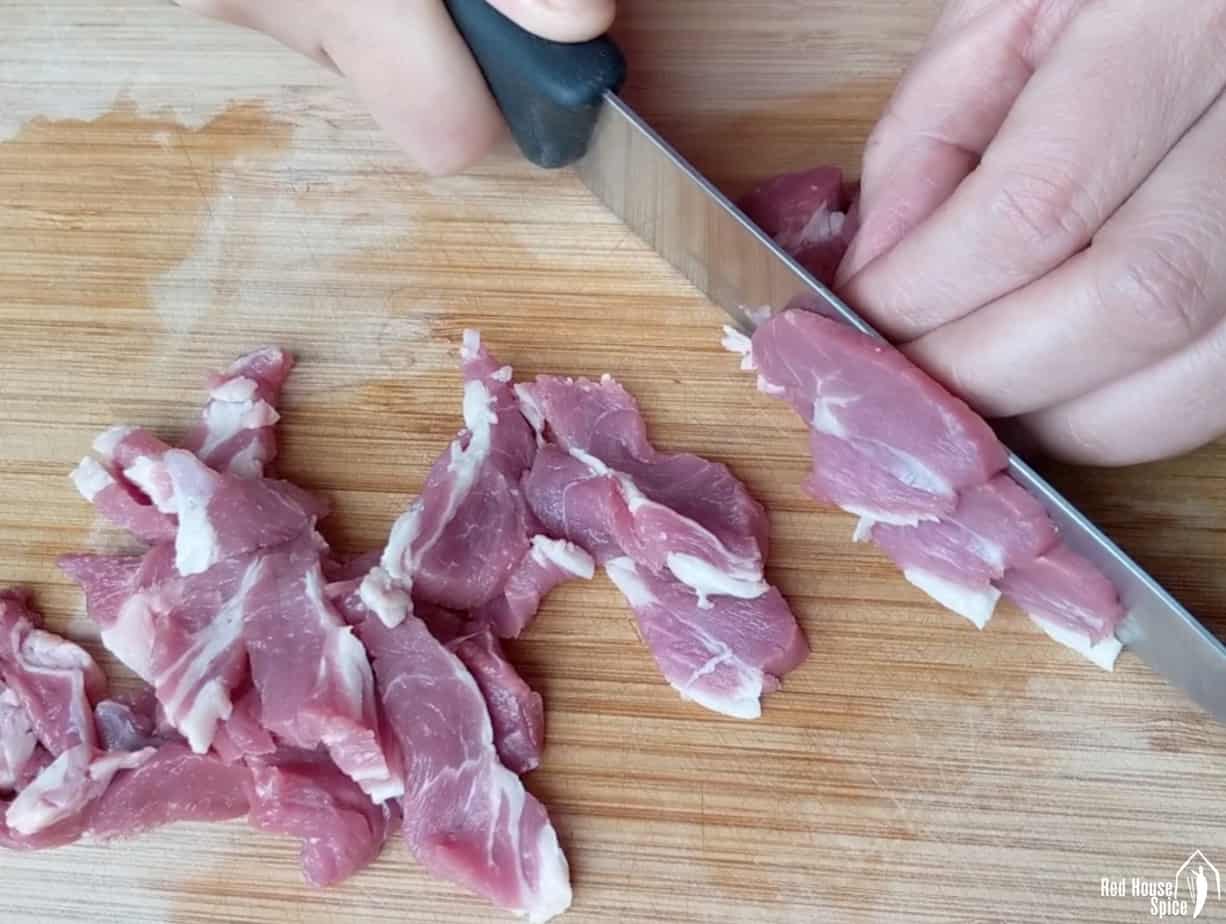
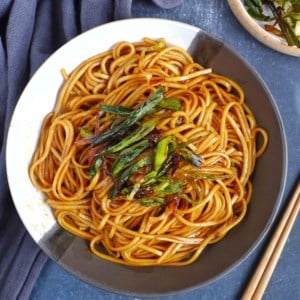
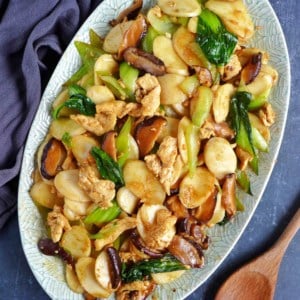
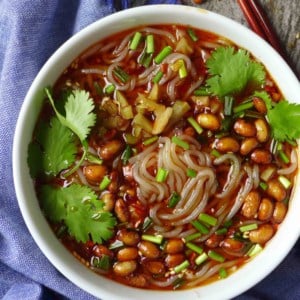
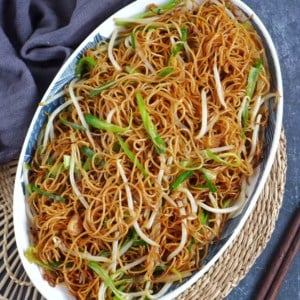
Made this once with lamb, then again with chicken (the wife isn’t as fond of lamb as me), added some fioretto cauliflower, and it turned out absolutely amazing! The 面片 is super QQ I love it! Thanks for a great recipe 🙂
Yes, the QQ texture is everything. Glad you liked it!
Since my first review of this recipe back in May I’ve made it many more times and my husband and I both love it. Last night we were trying to think if there was anything that could possibly improve it but we agreed it’s perfect as it is.
I’ve taken to buying boneless leg of lamb when it’s on sale and slicing it for stir-fry, then wrapping it in 13-ounce packets for the freezer. That way making this recipe is very easy.
It’s a satisfying, flavorful one-bowl meal.
That’s wonderful to hear Kalia! Yes, it’s such a good idea to freeze the meat in small portions for later use. I do the same too.
This is easily my new favorite! Even my husband, who doesn’t love lamb, enjoyed this dish. So flavorful and a lot easier to make than I anticipated.
It’s one of the favourites in our house too!
Delicious! Since my husband and I love cumin and lamb, this dish was a hit. First time making torn noodles. Definitely not the last. Now I want to try pulled noodles, since the dough was so pleasant to work with. The texture of the noodles was exceptional.
I’m going to buy a boneless leg of lamb, slice it for stir fry and portion it for this recipe since I know I’ll be making this again and again. I added a bit of slivered ginger which went well with the other flavors.
Much easier to make than I thought it might be, and when all the prep is done, it comes together in minutes.
How long can the dough rest before tearing? Could it be overnight?
So happy to know you’ve enjoyed the dish! You can leave the dough to rest overnight. As it will become softer and softer over time, I’d suggest you make the initial dough a little firmer. That is to say to reduce the water slightly.
Delicious combination of spices. I have been the Lanzhou several times and this reminds me of having mutton there.
Yes! My hometown Lanzhou has the best mutton/lamb dishes.